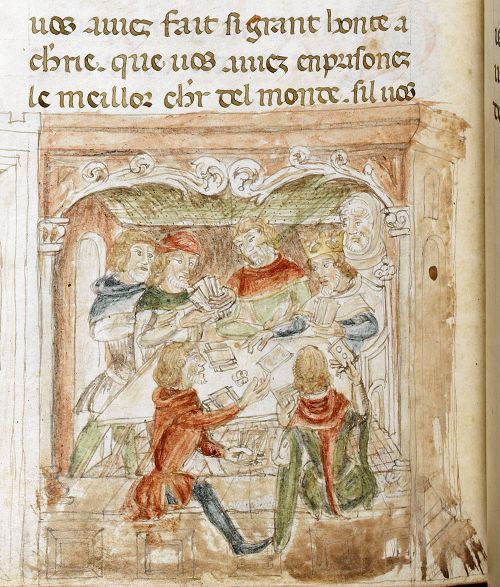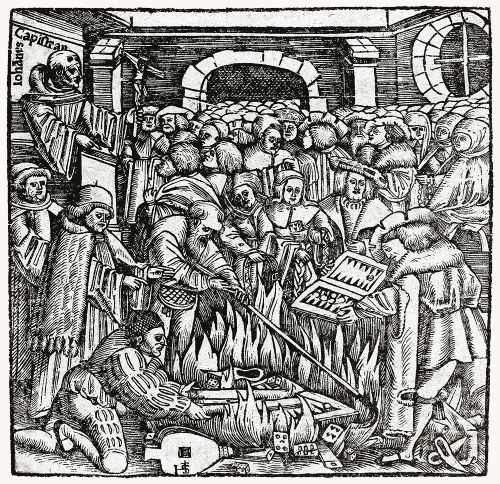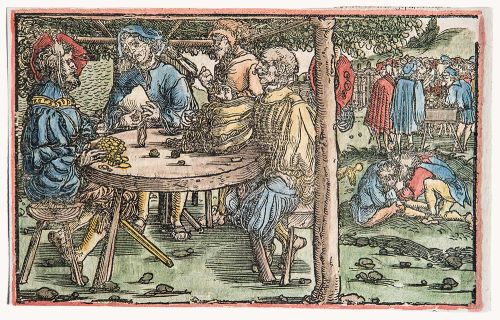

There is a very big possibility that playing cards was in vogue in West European countries around 1375.
There is a reference about card playing in China in 969 A.D., in the 'Liao shih' of T'o-t'o, a history of the Liao dynasty (907-1125).
Very likely through the commerce channels (and sailors?) card games went to India, Persia, Egypt during the Mamluk era, and finally into Europe through both the Italian and Iberian peninsulas in the second half of the 14th century.
Earliest documentation we find is a decree outlawing a card game called ‘naibbe’ in Florence on May 23, 1376, also documents stating that the first card game factory in Venice started its business in 1391.
About dices and board games, it may be even older than that, dices were played by the crusaders during the siege of a Syrian castle. Gambling was hot and new, back then, hard to resist.
Card games were several already from the beginning: Tarocchi, Minchiate, Bassetta, Primiera, Faraone.
The Catholic Church and the local governments of course were all against gambling: it was destibilizing too much the society.
So gambling, anykind, was labeled as "sinful". According to an eyewitness, the Italian Franciscan friar and sin preacher Giovanni da Capestrano (small city in Abruzzo), made a fire of all kinds of sinful material he had collected in the German city Erfurt and neighborhood.
It was the Lord’s Day August 10, 1452, and this is a supposed inventory of what was burned:
John of Capistrano was quite a radical and fanatic inquisitor preacher, and would usually do this kind of exploits, provpking a kind of "repentance" in sinner, first in the Italic peninsula, then in Europe.
He was also named "Scourge of the Jews", inciting anti-semitic violence, and in Breslau in 1452 he was responsible for the death of several Jews.
How things go, he was canonized by Pope Alexander VII in 1490, demonstrating that "fighting sin" pays off, in the end.


